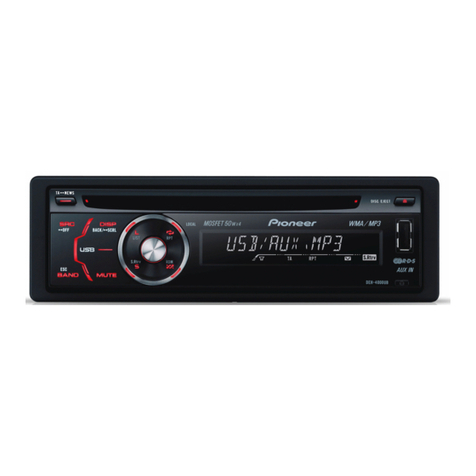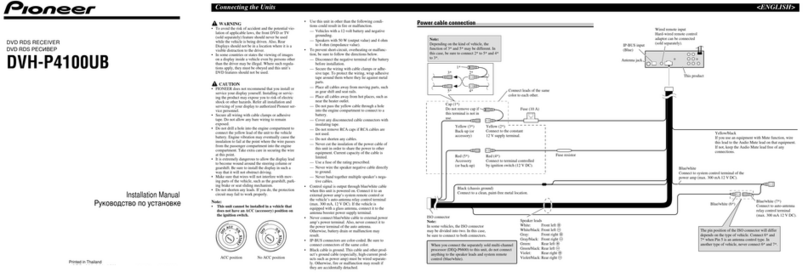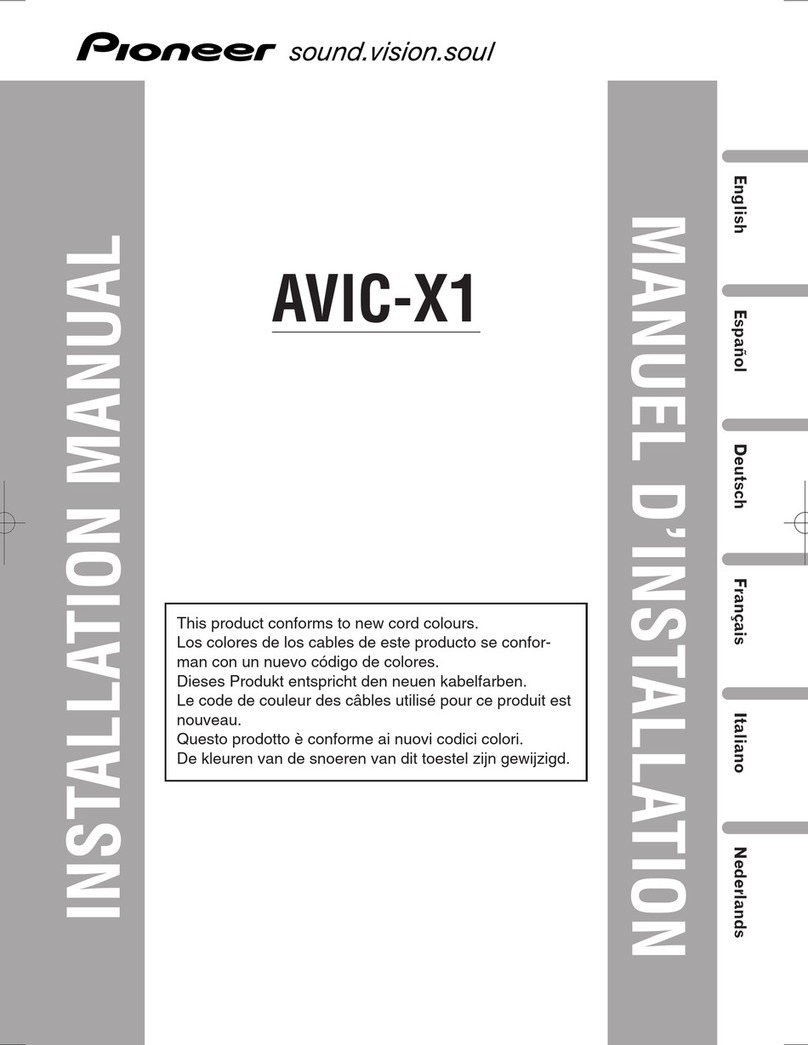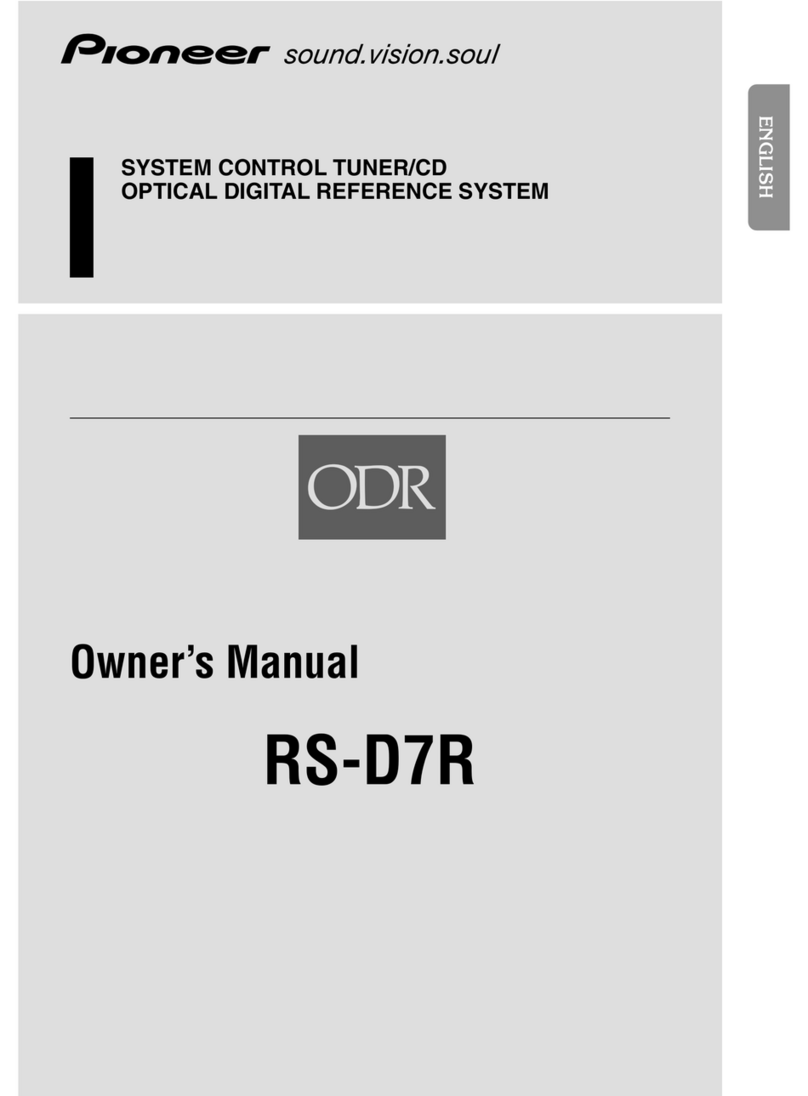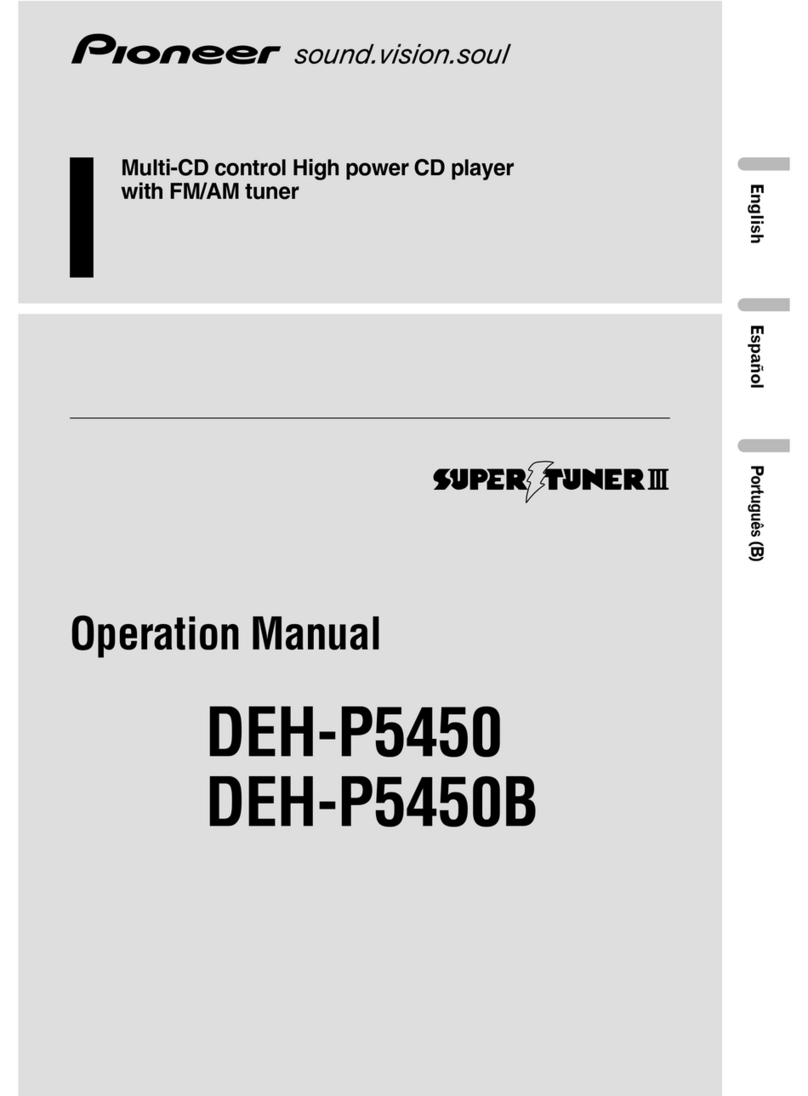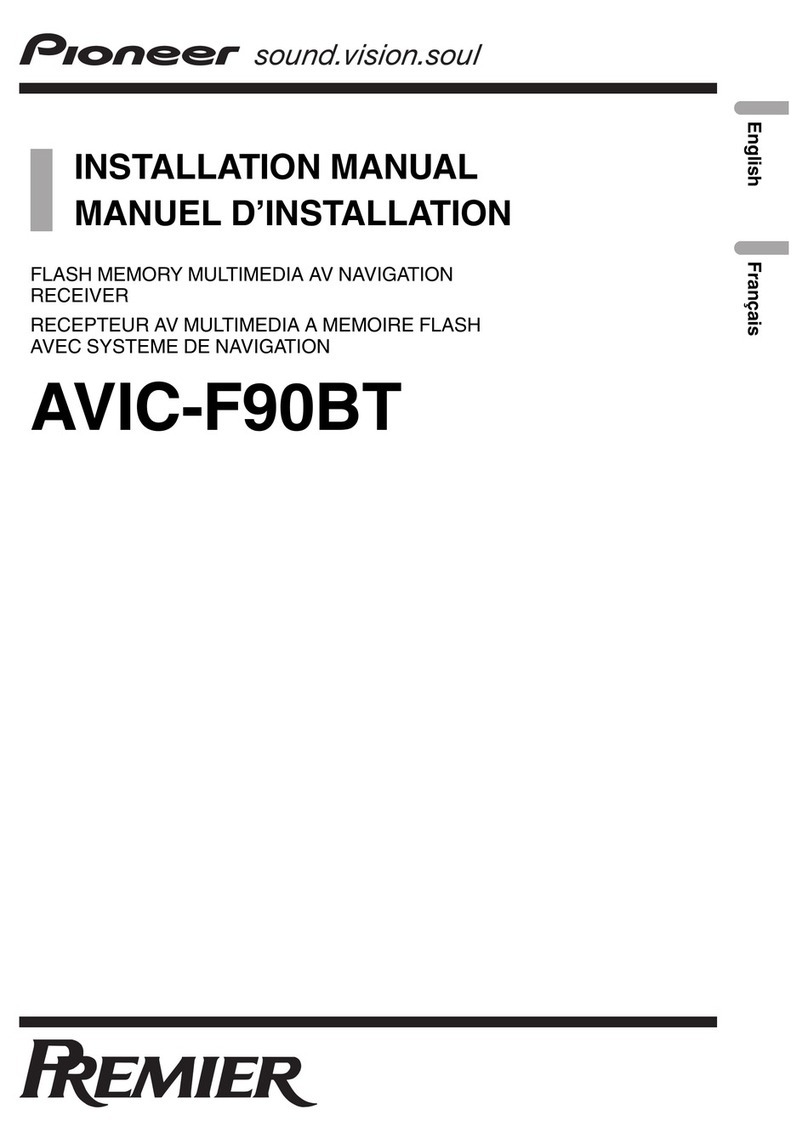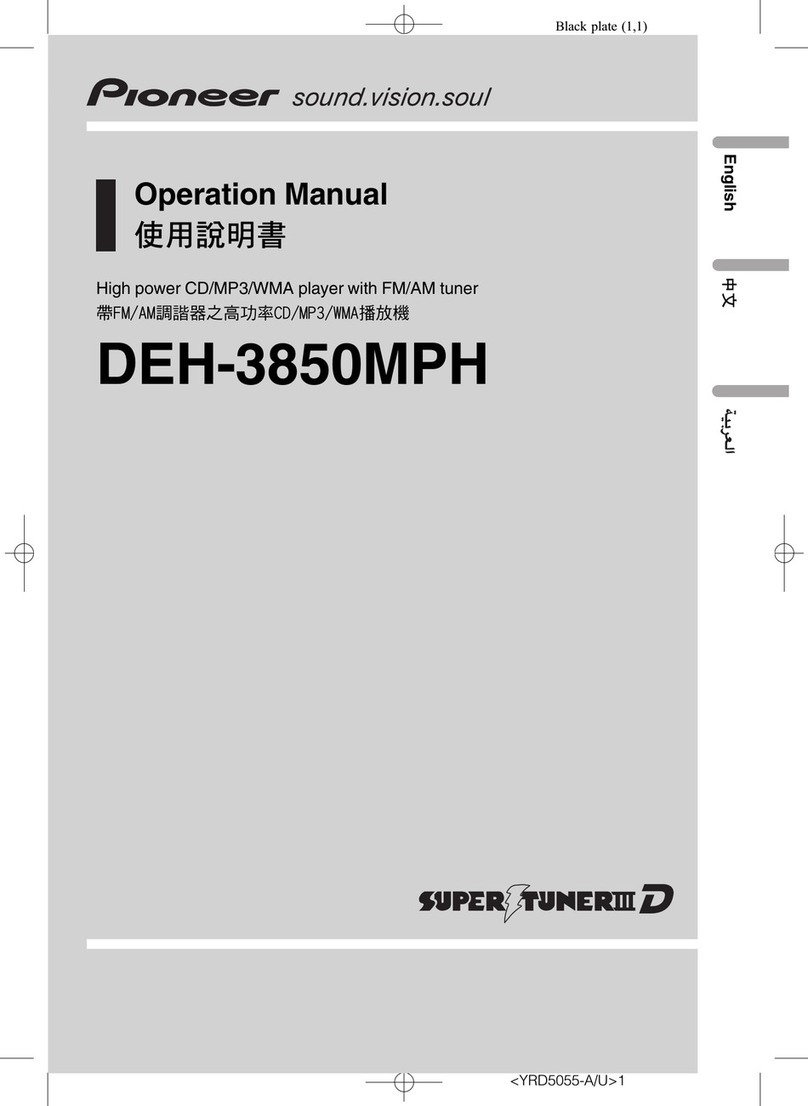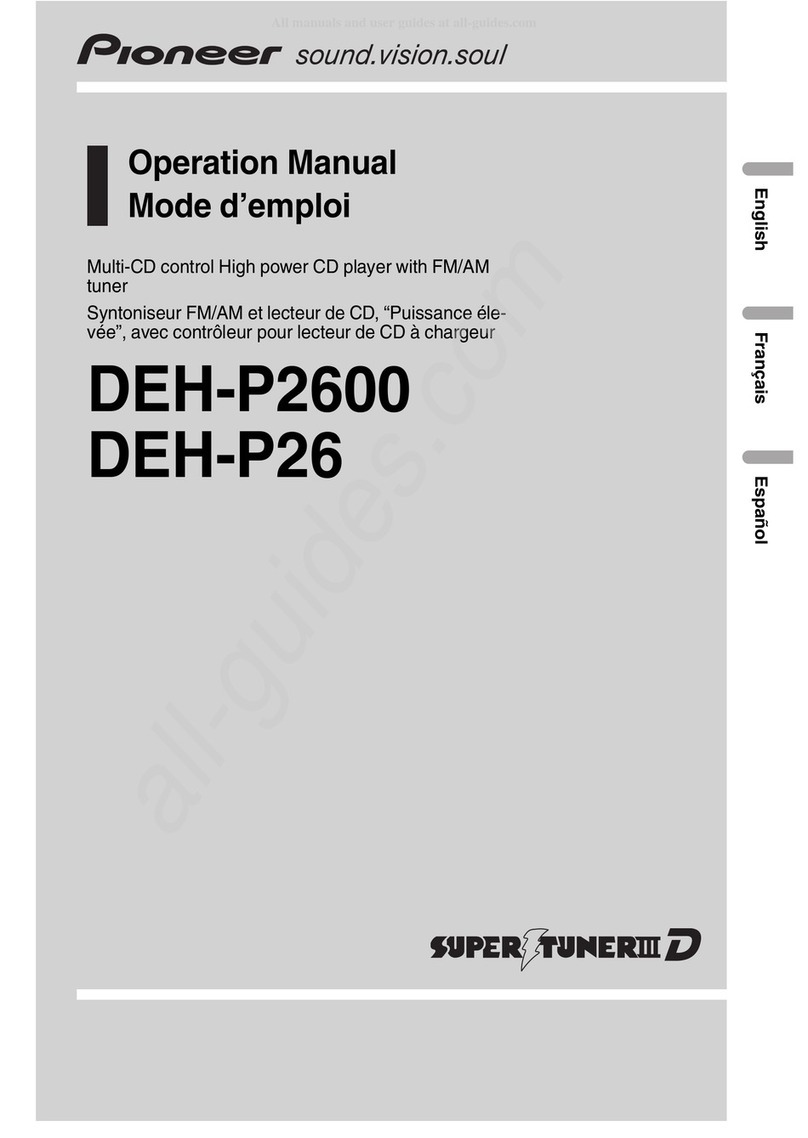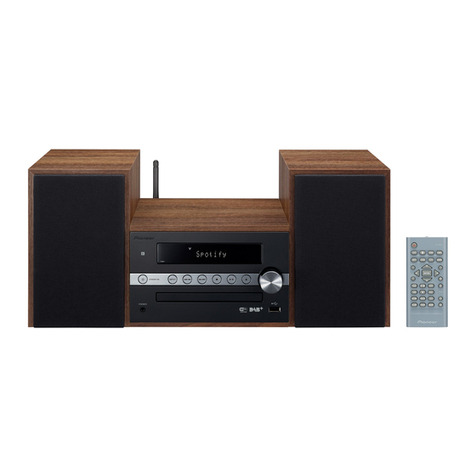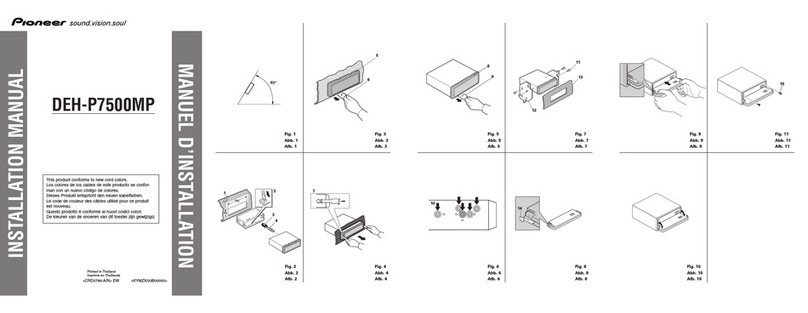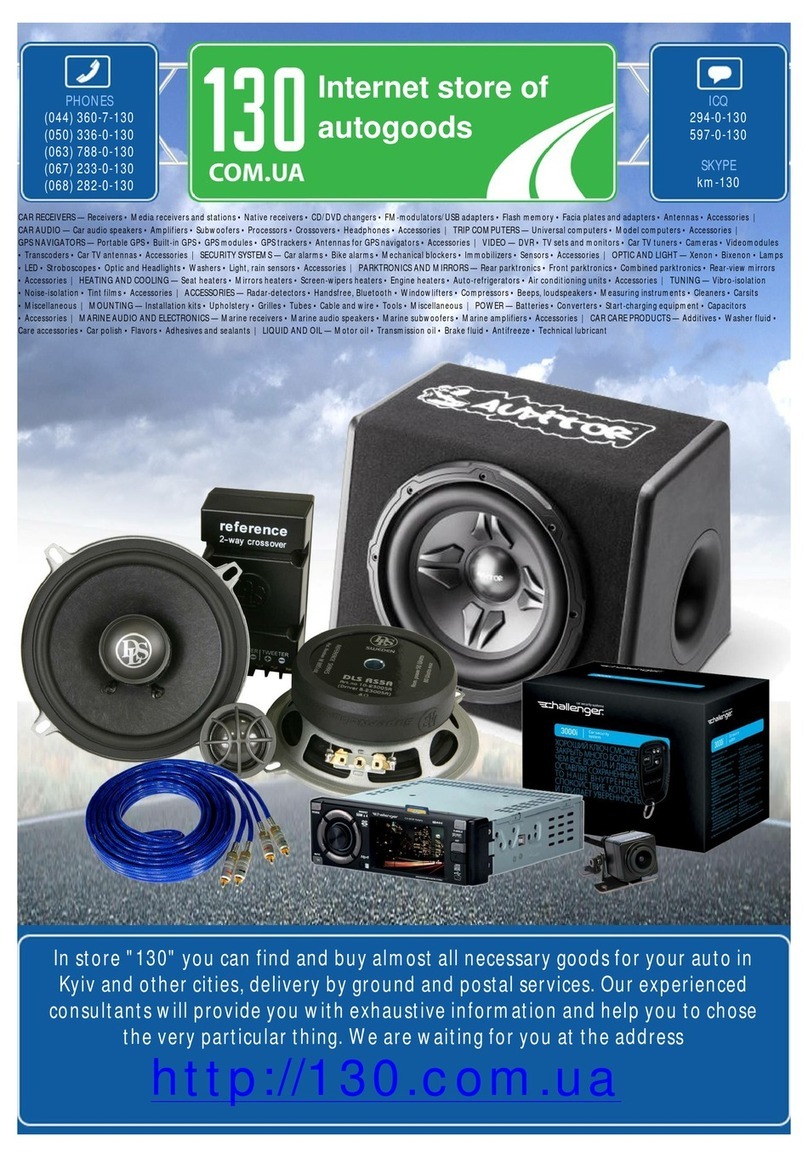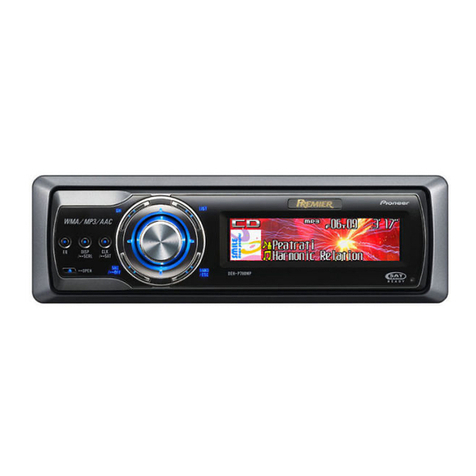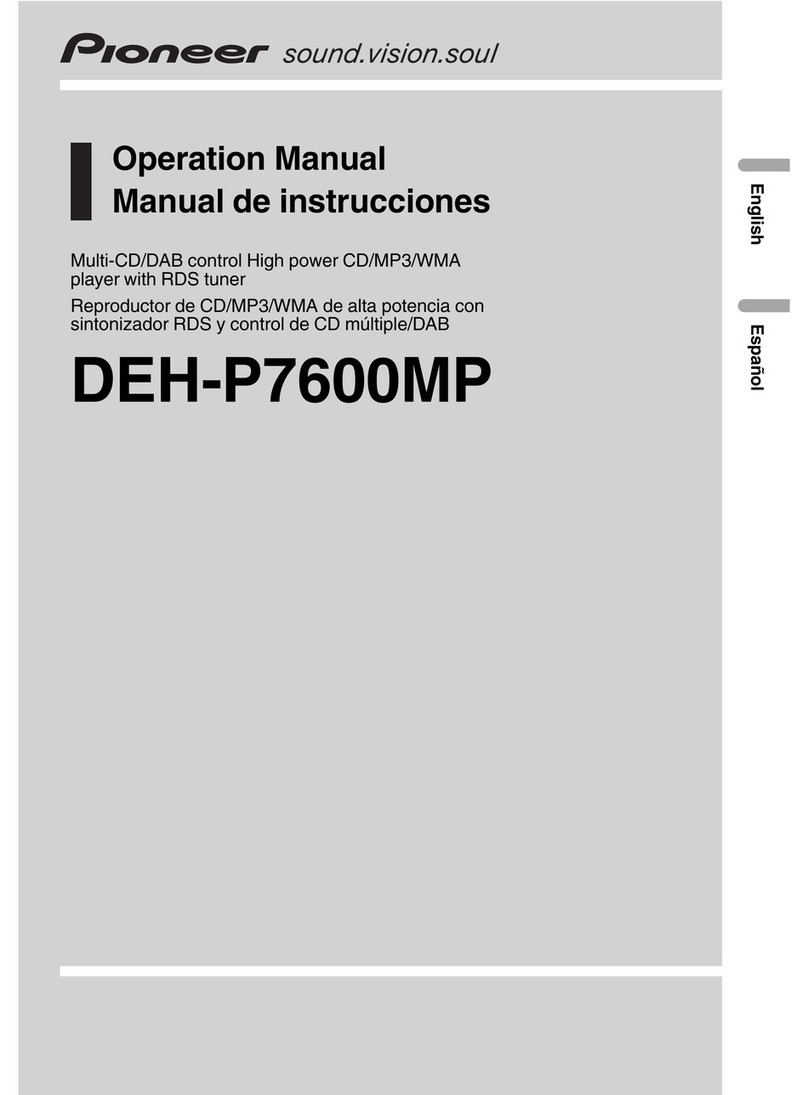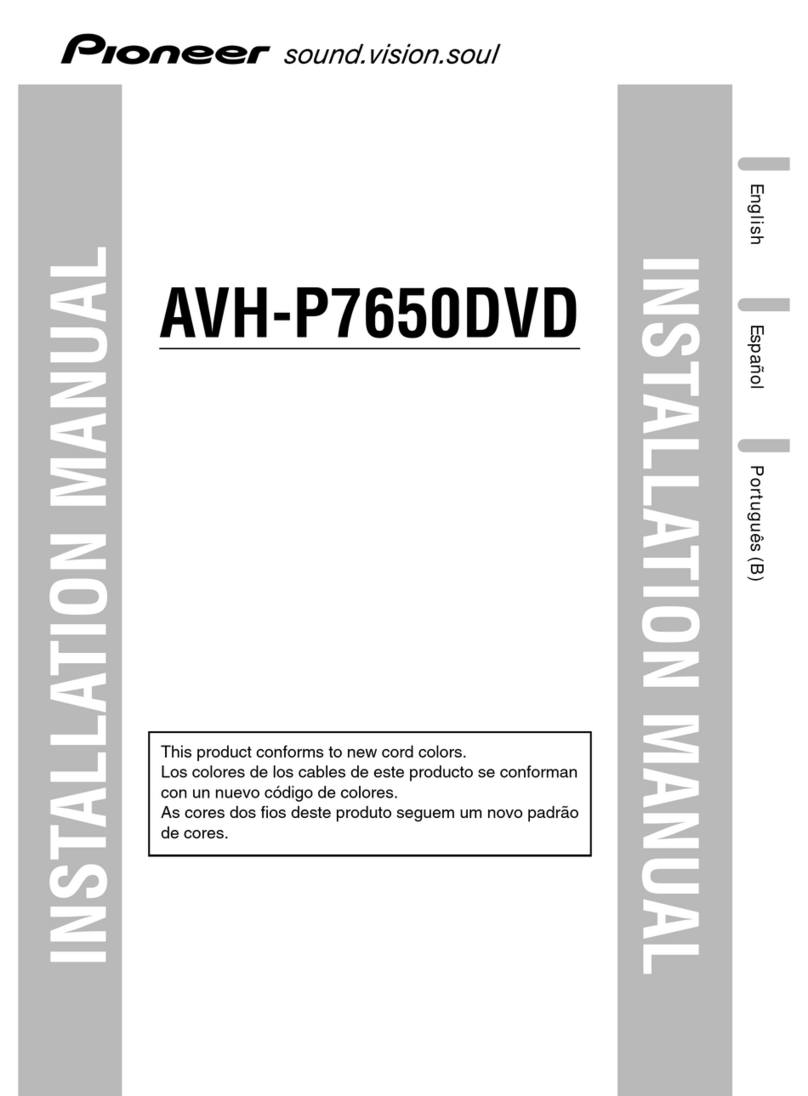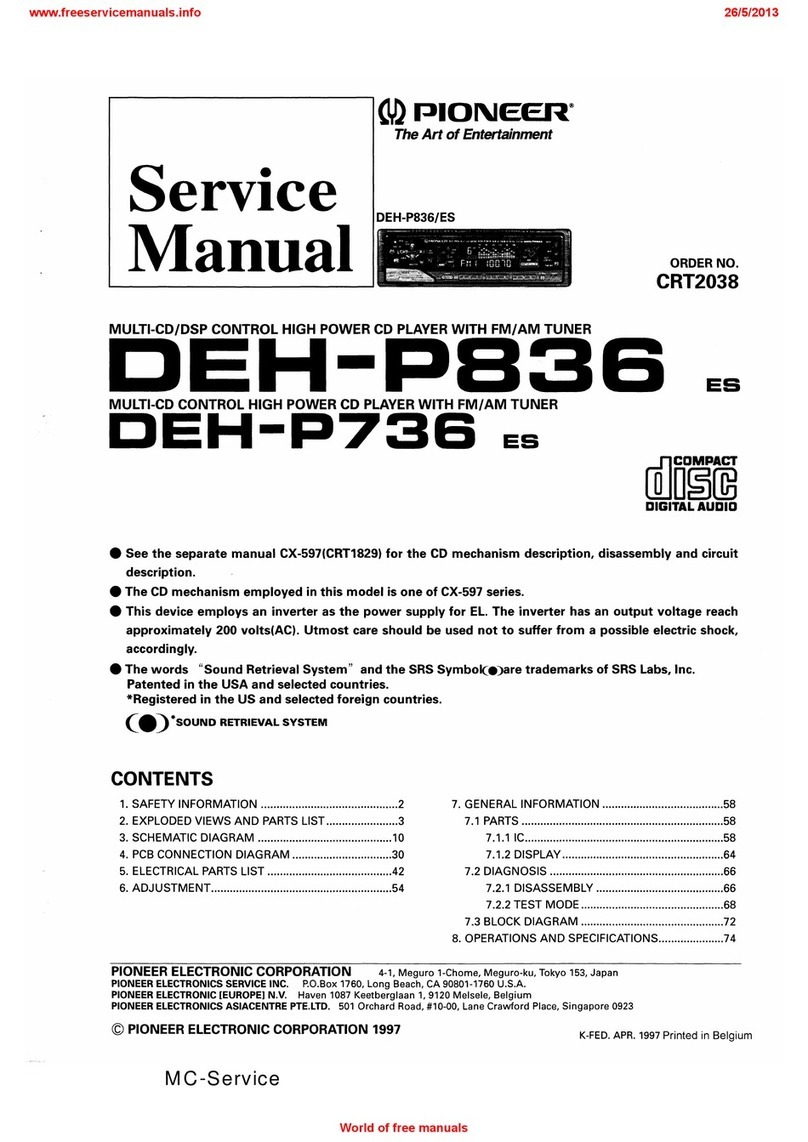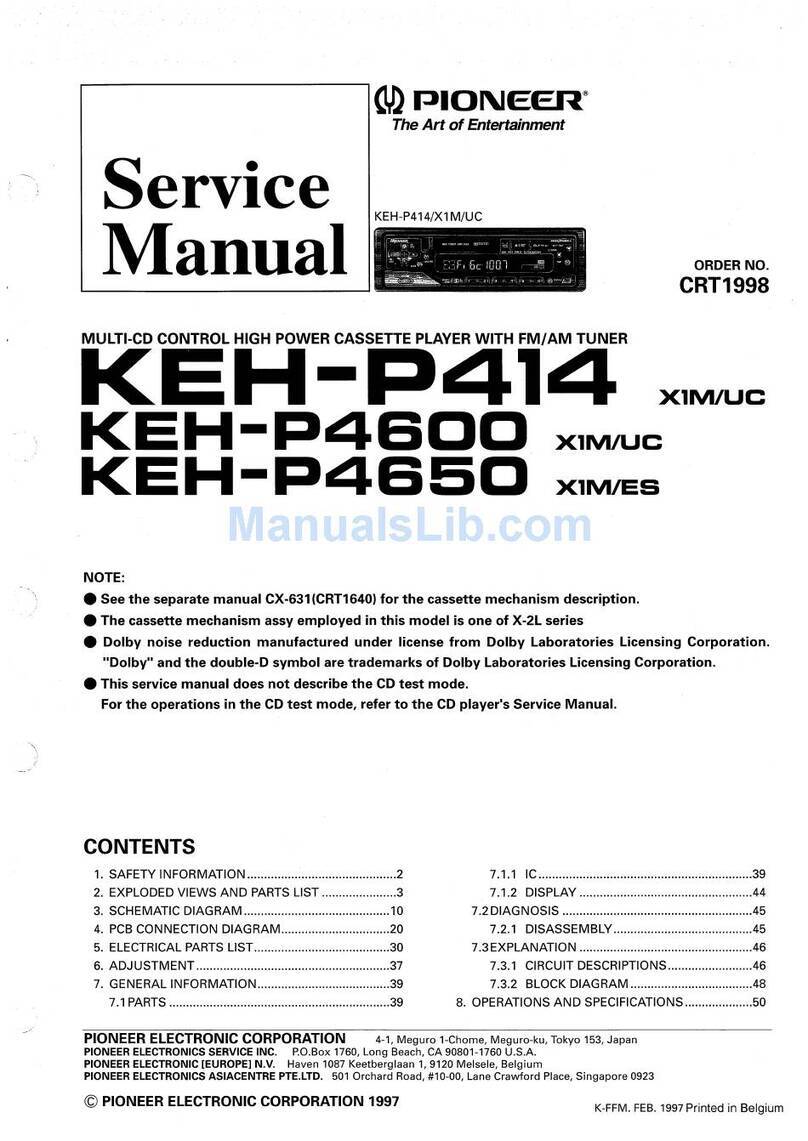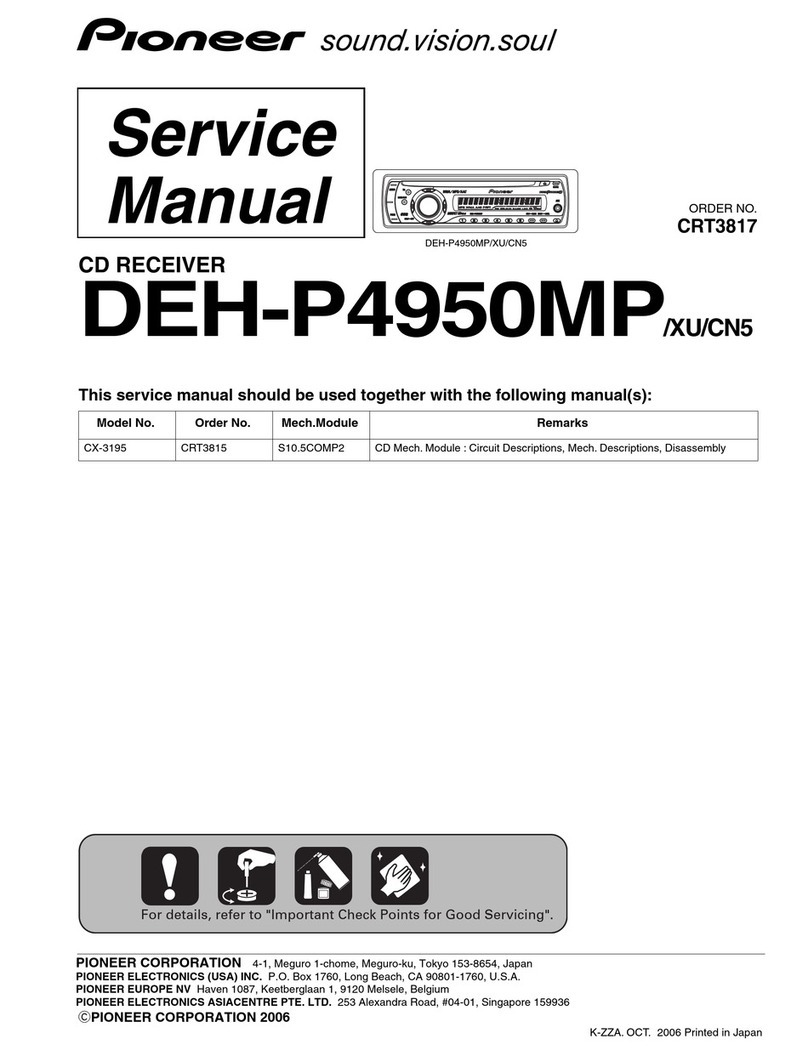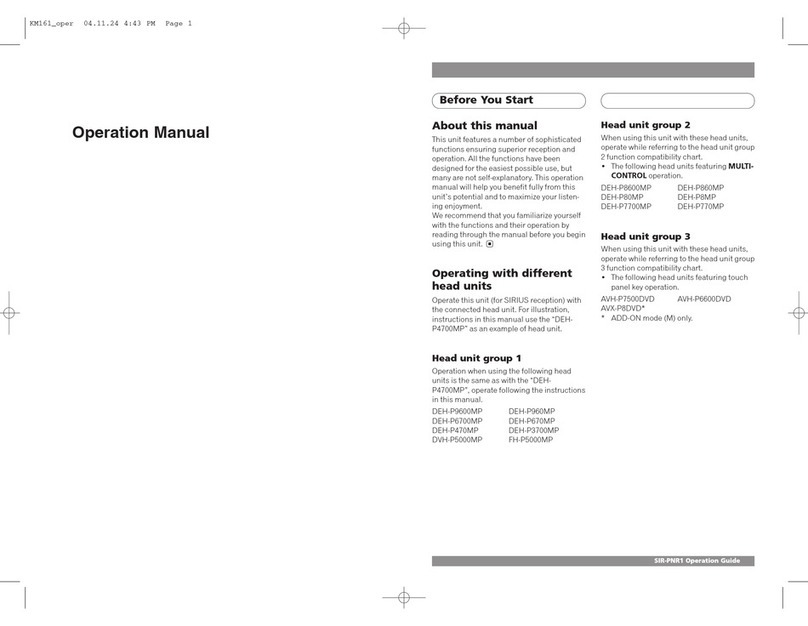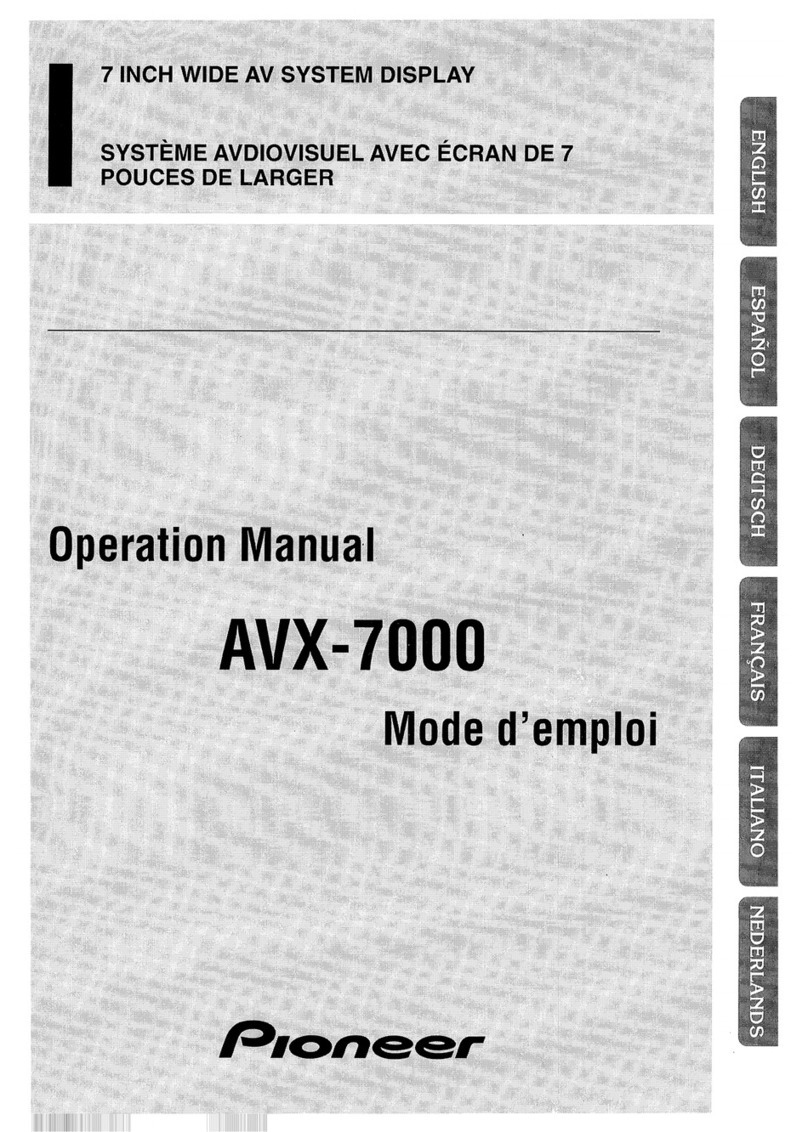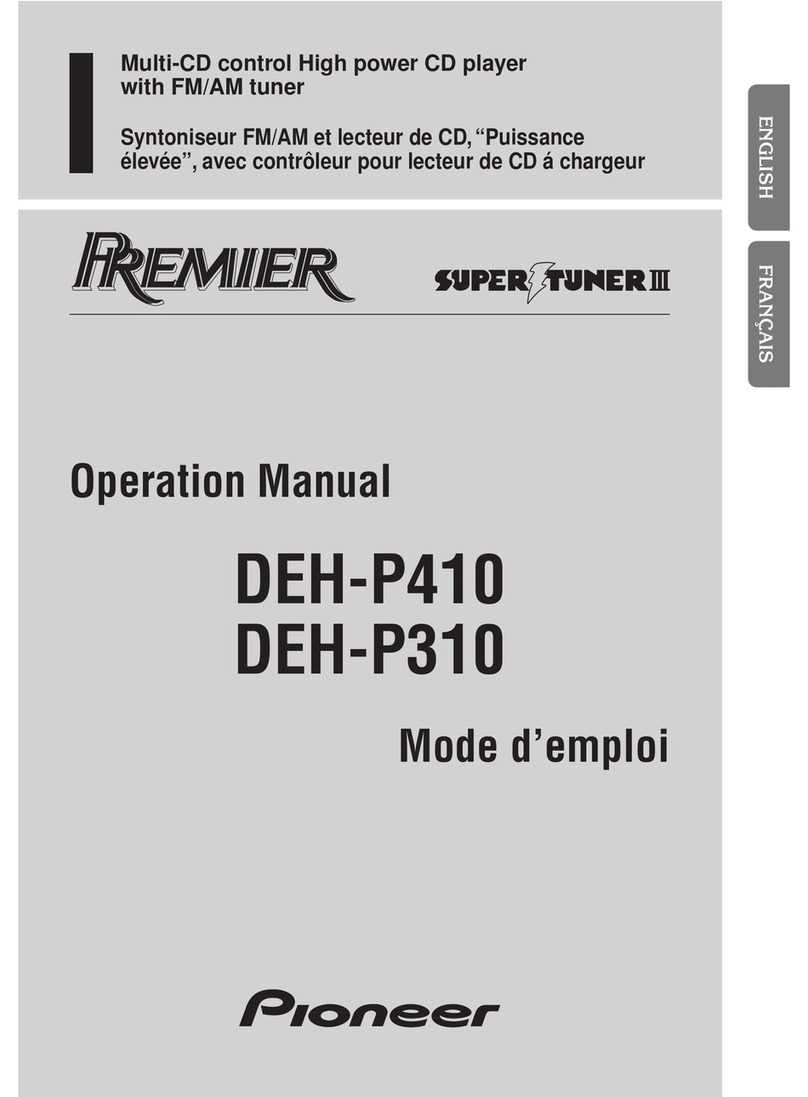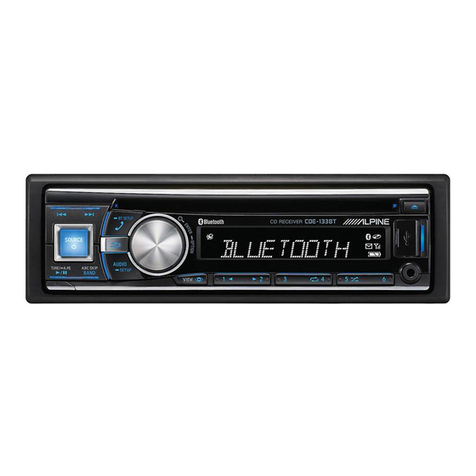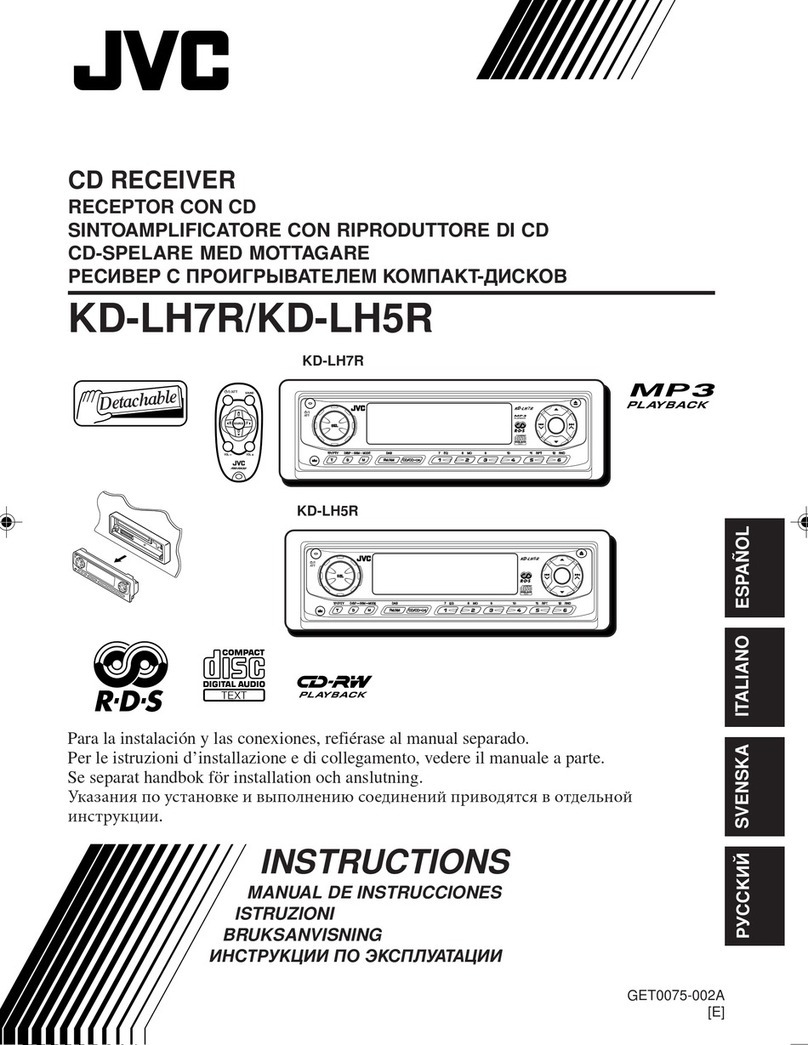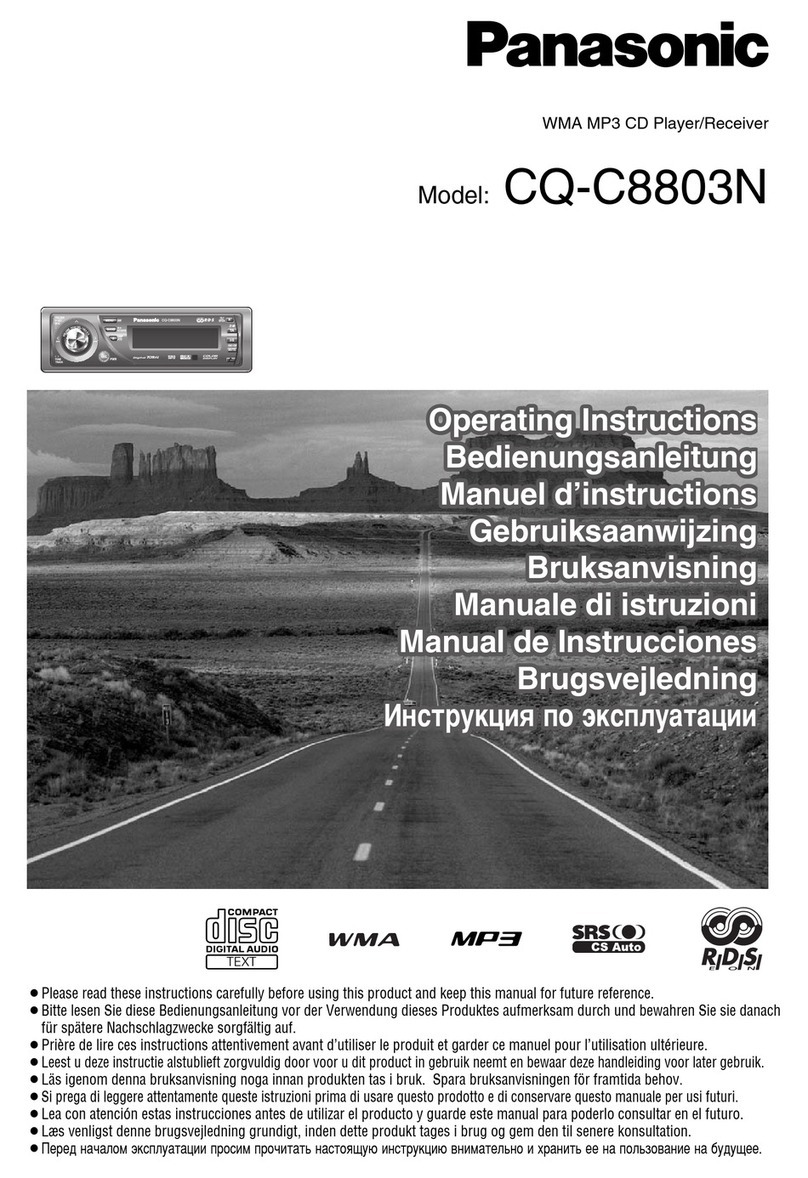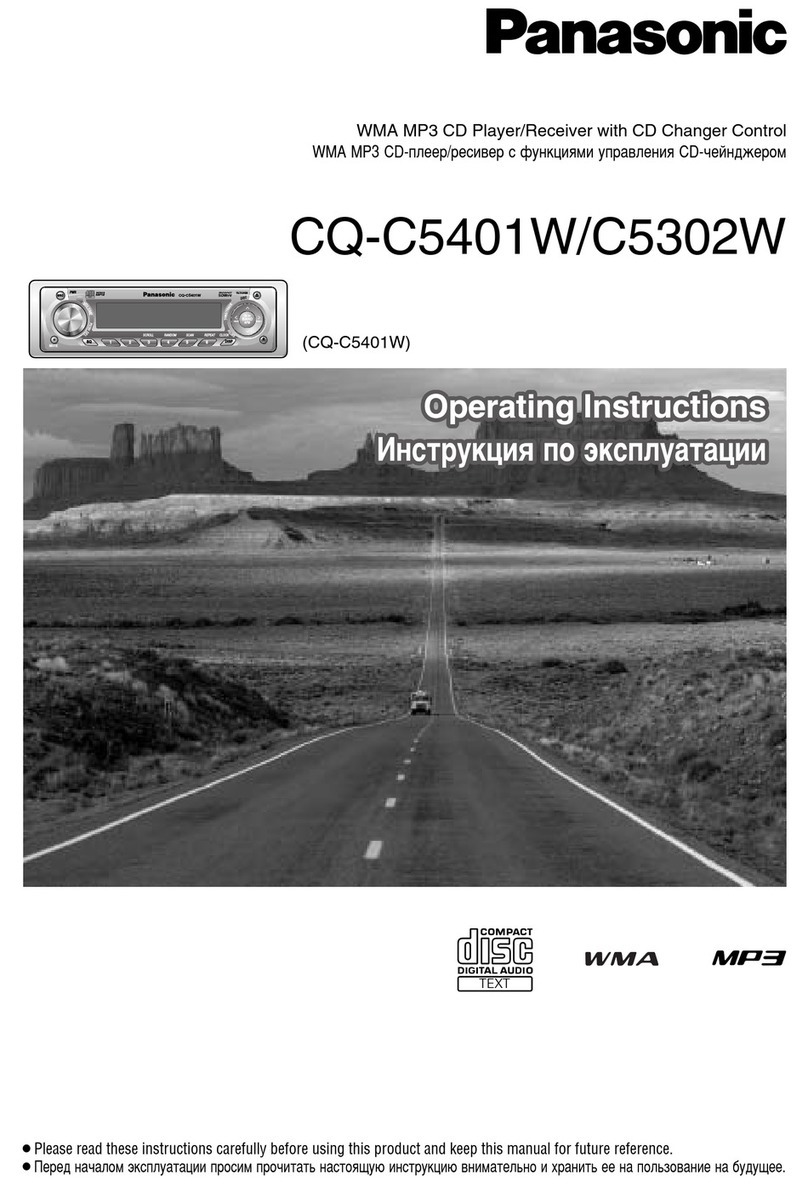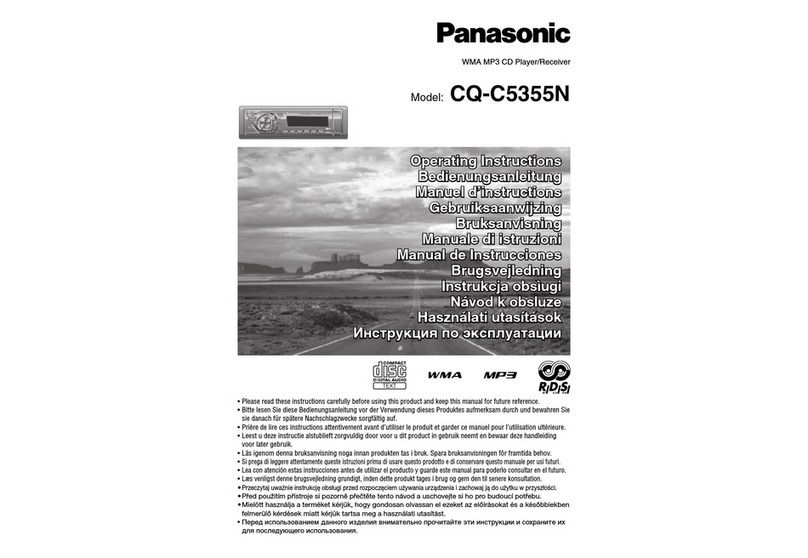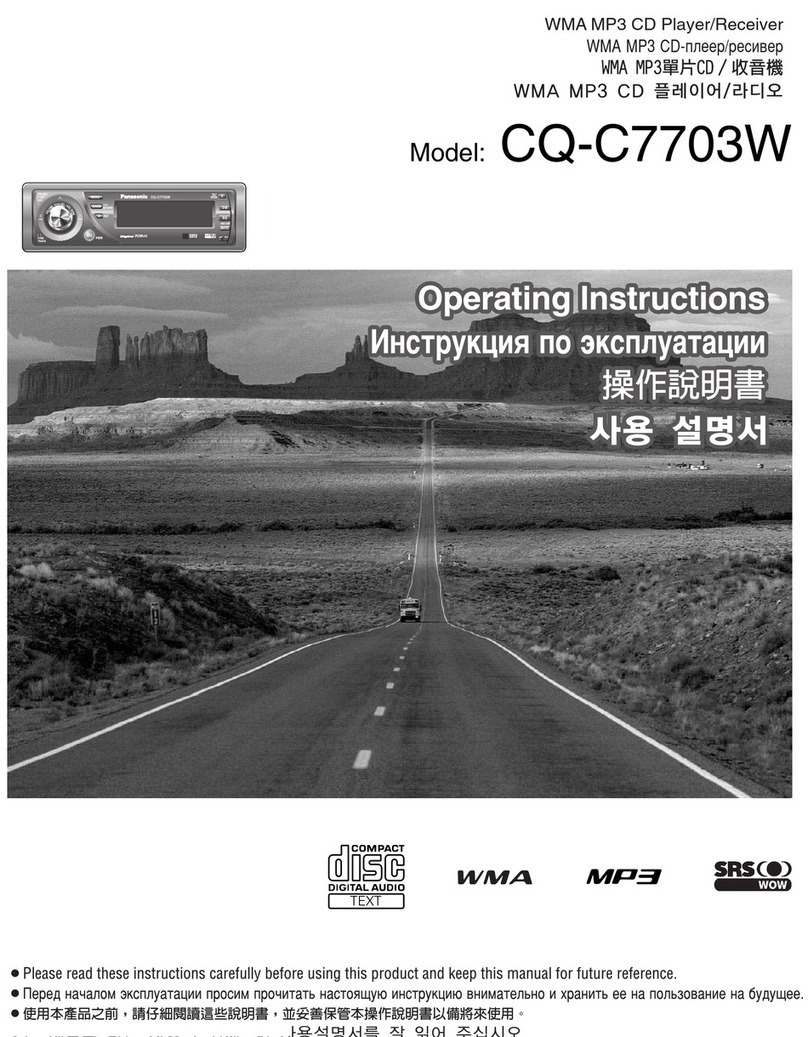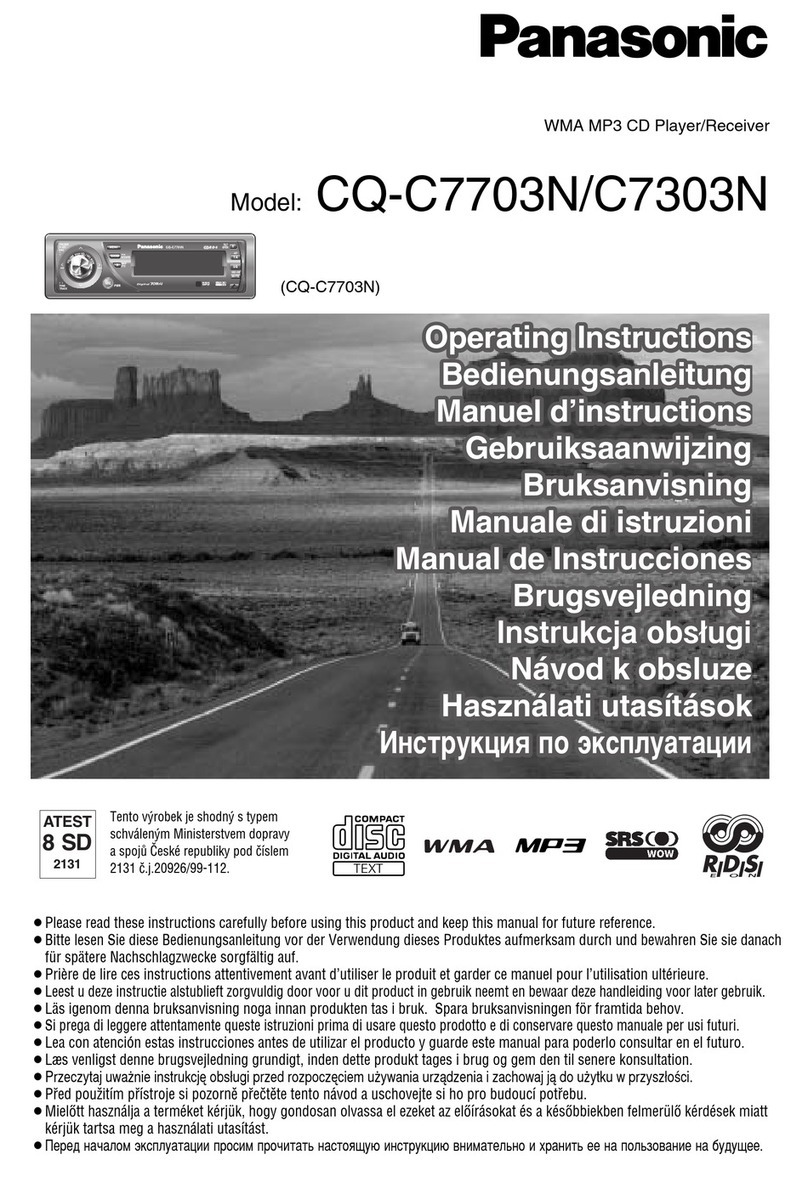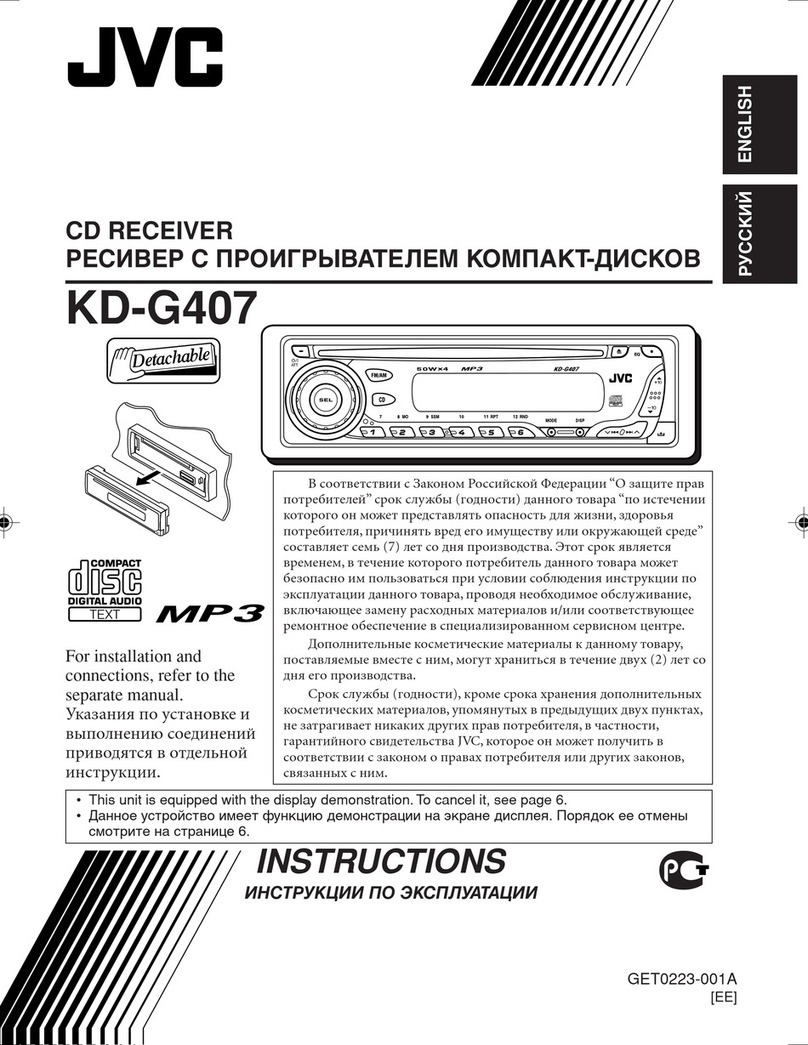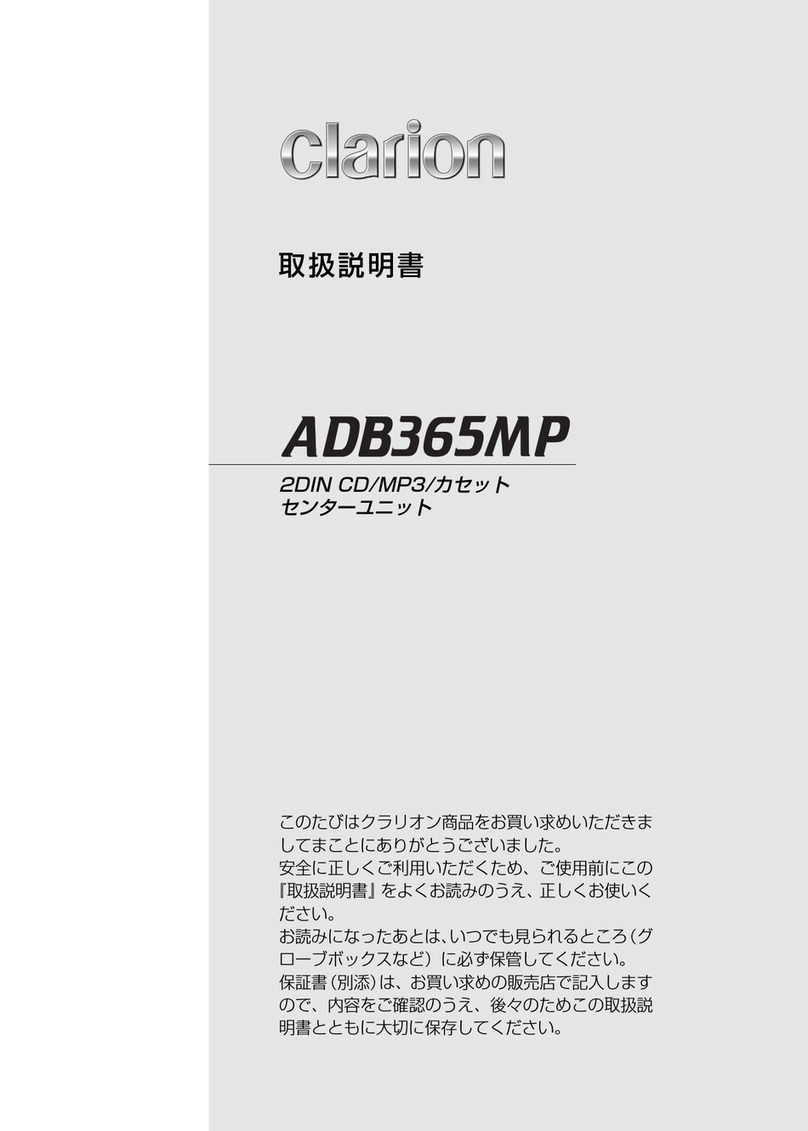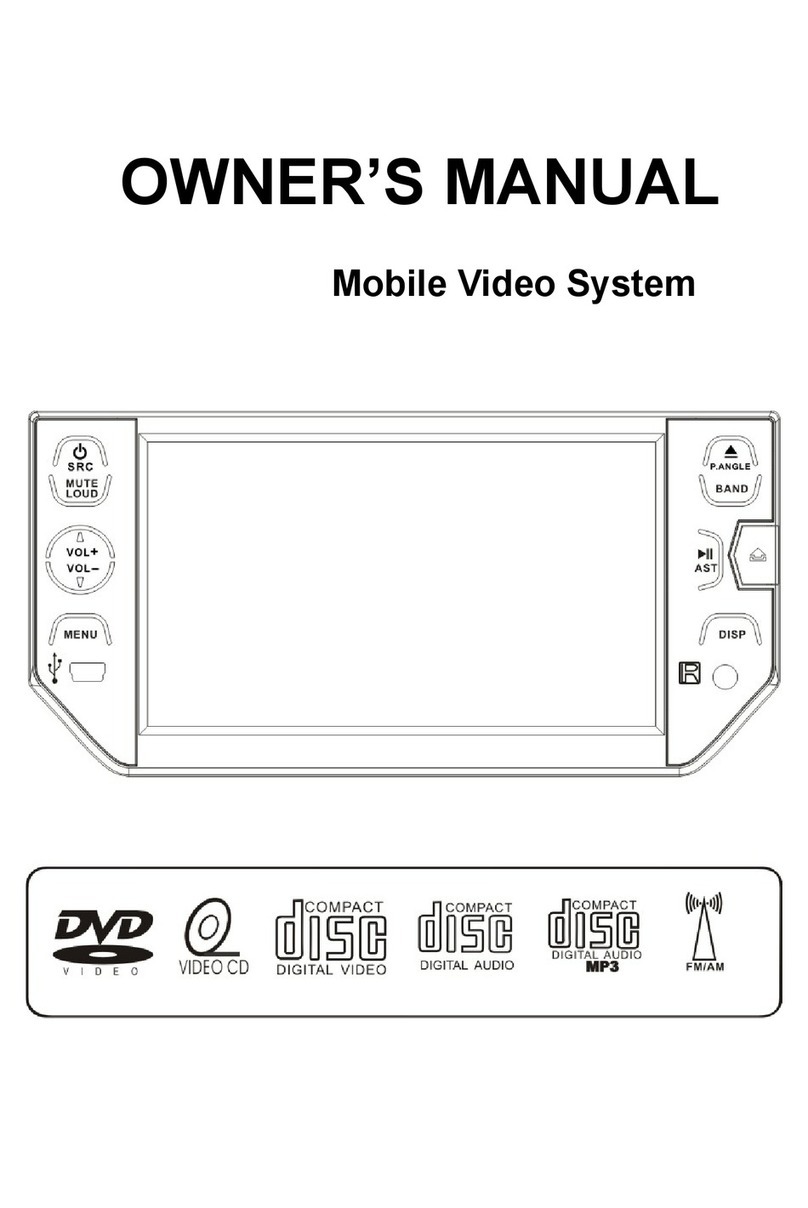Nota:
• Antes de instalar o aparelho, conecte os fios tem-
porariamente, certificando-se de que todos este-
jam conectados corretamente, e que o aparelho e
o sistema completo funcionem adequadamente.
• Utilize somente as peças incluídas com o aparel-
ho para garantir uma instalação correta. O uso de
peças não autorizadas pode causar defeitos.
• Consulte o seu revendedor mais próximo se for
necessário fazer perfurações ou outras modifi-
cações no veículo para a instalação.
• Instale o aparelho de modo que não fique no
caminho do motorista nem onde possa causar
danos aos passageiros no caso de uma parada
repentina, como numa freada de emergência.
• O laser de semicondutor será avariado se for
sobreaquecido. Portanto, não instale o aparelho
num lugar que fique muito quente como por
exemplo, perto da saída do aquecedor.
• Se o ângulo de instalação exceder de 30° desde a
horizontal, o aparelho pode não atingir sua per-
formance ótima (Fig. 1).
Montagem dianteira/traseira DIN
Este aparelho pode ser instalado apropriadamente
na “Dianteira” (montagem convencional dianteira
DIN) ou na “Traseira” (montagem traseira DIN,
utilizando os orifícios de parafusos roscados nos
lados do chassi do aparelho). Para maiores detal-
hes, refira-se aos seguintes métodos de instalação
ilustrados.
Montagem dianteira DIN
Instalação com uma bucha de borracha
(Fig. 2)
1. Painel de instrumentos
2. Sujeitador
Depois de inserir o sujeitador no painel de instru-
mentos, escolha as lingüetas apropriadas de acor-
do com a espessura do material do painel de
instrumento, e dobre-as.
(Instale o mais firme possível usando as lingüetas
superior e inferior. Para fixar, dobre as lingüetas
90 graus.)
3. Bucha de borracha
4. Parafuso
Remoção do aparelho (Fig. 3) (Fig. 4)
5. Armação
6. Insira o pino de liberação no orifício no fundo da
armação e puxe-o para fora para remover a
armação.
(Quando recolocar a armação, aponte o lado com
a ranhura para baixo e fixe-a.)
7. Insira as chaves de extração fornecidas no aparel-
ho, como mostrado na figura, até que elas se
encaixem em posição. Enquanto mantém as
chaves pressionadas contra os lados do aparelho,
puxe o aparelho para fora.
Montagem traseira DIN
Instalação utilizando os orifícios de
parafuso no lado do aparelho
(Fig. 5) (Fig. 6) (Fig. 7)
1. Retire a armação.
8. Armação
9. Insira o pino de liberação no orifício no fundo da
armação e puxe-o para fora para remover a
armação.
(Quando recolocar a armação, aponte o lado com
a ranhura para baixo e fixe-a.)
2. Fixação do aparelho no suporte de
montagem de rádio da fábrica.
10. Escolha a posição onde os orifícios de parafusos
do suporte e os orifícios dos parafusos do com-
ponente principal fiquem alinhados (ajustados), e
aperte os parafusos em 2 lugares em cada lado.
Utilize parafusos reforçados (5 ×8 mm), ou para-
fusos embutidos (5 ×9 mm), dependendo da
forma dos orifícios para os parafusos no suporte.
11. Parafuso
12. Suporte de montagem de rádio da fábrica
13. Painel de instrumentos ou consolo
Instalação <PORTUGUÊS (B)>
Note:
• Before finally installing the unit, connect the
wiring temporarily, making sure it is all connect-
ed up properly, and the unit and the system work
properly.
• Use only the parts included with the unit to
ensure proper installation. The use of unautho-
rized parts can cause malfunctions.
• Consult with your nearest dealer if installation
requires the drilling of holes or other modifica-
tions of the vehicle.
• Install the unit where it does not get in the dri-
ver’s way and cannot injure the passenger if there
is a sudden stop, like an emergency stop.
• The semiconductor laser will be damaged if it
overheats, so don’t install the unit anywhere hot
— for instance, near a heater outlet.
• If installation angle exceeds 30° from horizontal,
the unit might not give its optimum performance.
(Fig. 1)
DIN Front/Rear-mount
This unit can be properly installed either from
“Front” (conventional DIN Front-mount) or
“Rear” (DIN Rear-mount installation, utilizing
threaded screw holes at the sides of unit chassis).
For details, refer to the following illustrated
installation methods.
DIN Front-mount
Installation with the rubber bush (Fig. 2)
1. Dashboard
2. Holder
After inserting the holder into the dashboard,
then select the appropriate tabs according to the
thickness of the dashboard material and bend
them.
(Install as firmly as possible using the top and
bottom tabs. To secure, bend the tabs 90
degrees.)
3. Rubber bush
4. Screw
Removing the Unit (Fig. 3) (Fig. 4)
5. Frame
6. Insert the release pin into the hole in the bottom
of the frame and pull out to remove the frame.
(When reattaching the frame, point the side with
a groove downwards and attach it.)
7. Insert the supplied extraction keys into the unit,
as shown in the figure, until they click into place.
Keeping the keys pressed against the sides of the
unit, pull the unit out.
DIN Rear-mount
Installation using the screw holes on
the side of the unit (Fig. 5) (Fig. 6) (Fig. 7)
1. Remove the frame.
8. Frame
9. Insert the release pin into the hole in the bottom
of the frame and pull out to remove the frame.
(When reattaching the frame, point the side with
a groove downwards and attach it.)
2. Fastening the unit to the factory
radio mounting bracket.
10. Select a position where the screw holes of the
bracket and the screw holes of the head unit
become aligned (are fitted), and tighten the
screws at 2 places on each side. Use either truss
screws (5 ×8 mm) or flush surface screws
(5 ×9 mm), depending on the shape of the screw
holes in the bracket.
11. Screw
12. Factory radio mounting bracket
13. Dashboard or Console
Installation <ENGLISH> Installing the Remote Control Unit <ENGLISH>
Fitting the Remote Control Unit
Precaution:
• Press the remote control unit onto the mounting base until it clicks into place.
Fitting horizontally (Fig. 8)
Fitting vertically (Fig. 9)
Installation Using the Mounting Base (Fig. 10)
Precaution:
• To avoid it being a hindrance to driving, always install the remote control unit to the passenger’s
side – not the driver’s side.
• Install the mounting base so that the remote control unit is slanting upwards at an angle when
fitted.
• Before using double-sided tape, clean off any dirt on the surface to which the double-sided tape is
to be attached.
14. Mounting Base
15. Double-sided tape
16. Not used
17. Used
18. Passenger seat
Instalação do Controle Remoto <PORTUGUÊS (B)>
Colocação do controle remoto
Precaução:
• Pressione a unidade do controle remoto na base de montagem até que se encaixe em posição.
Colocação horizontal (Fig. 8)
Colocação vertical (Fig. 9)
Instalação com a base de montagem (Fig. 10)
Precaução:
• Para evitar que o controle remoto perturbe a condução do automóvel, sempre instale-o no lado do
passageiro, e não no lado do motorista.
• Instale a base de montagem de modo que a unidade do controle remoto fique inclinado para cima
num ângulo quando montado.
• Antes de utilizar a fita adesiva de duas faces, remova qualquer sujeira da superfície na qual fixará a
fita.
14. Base de montagem
15. Fita adesiva de duas faces
16. Não usado
17. Usado
18. Assento do passageiro
